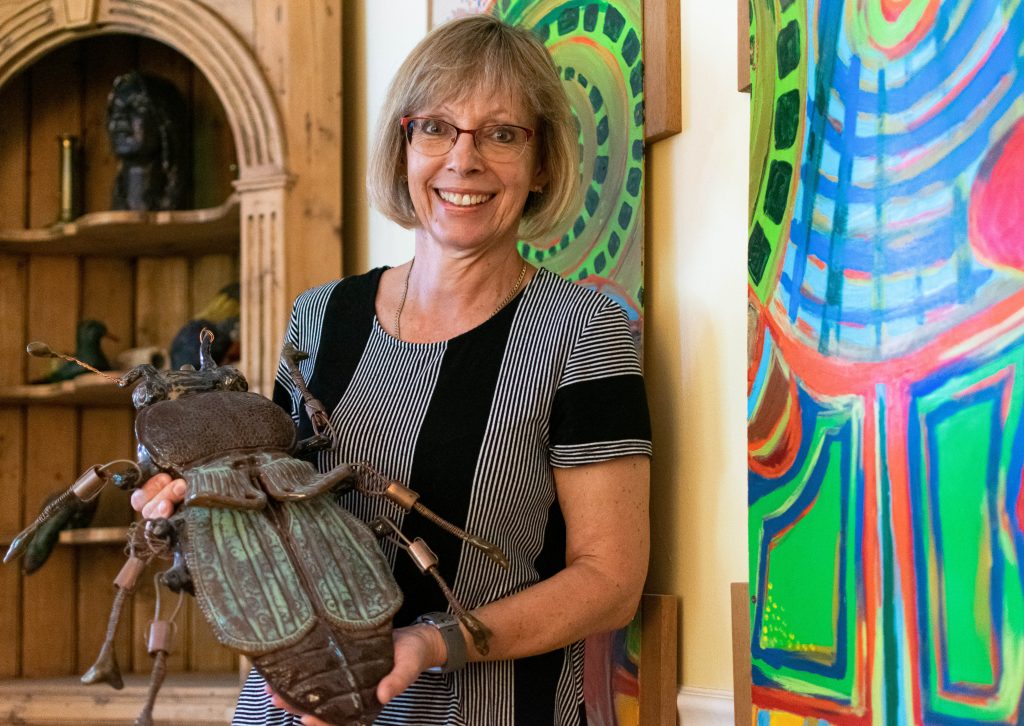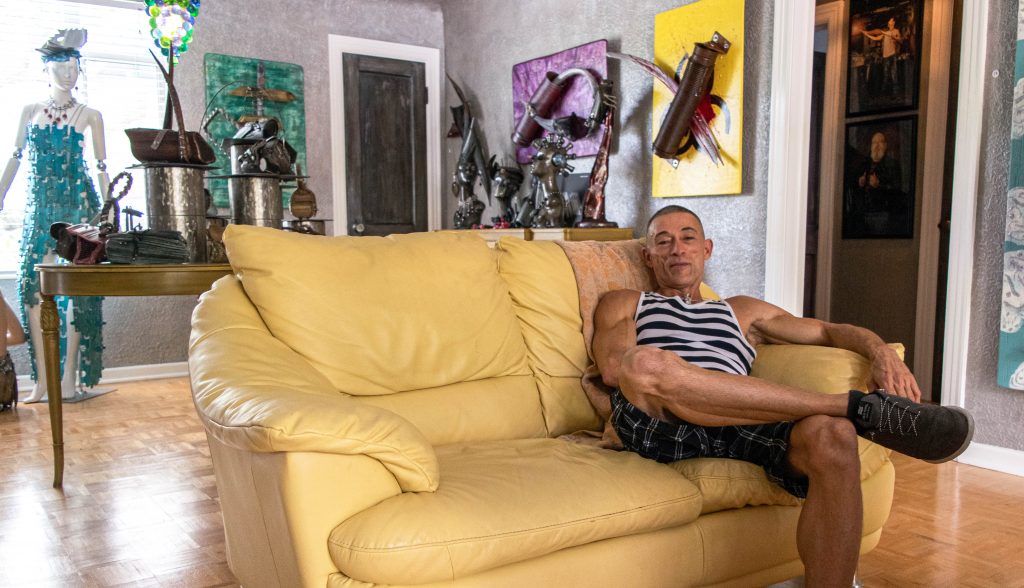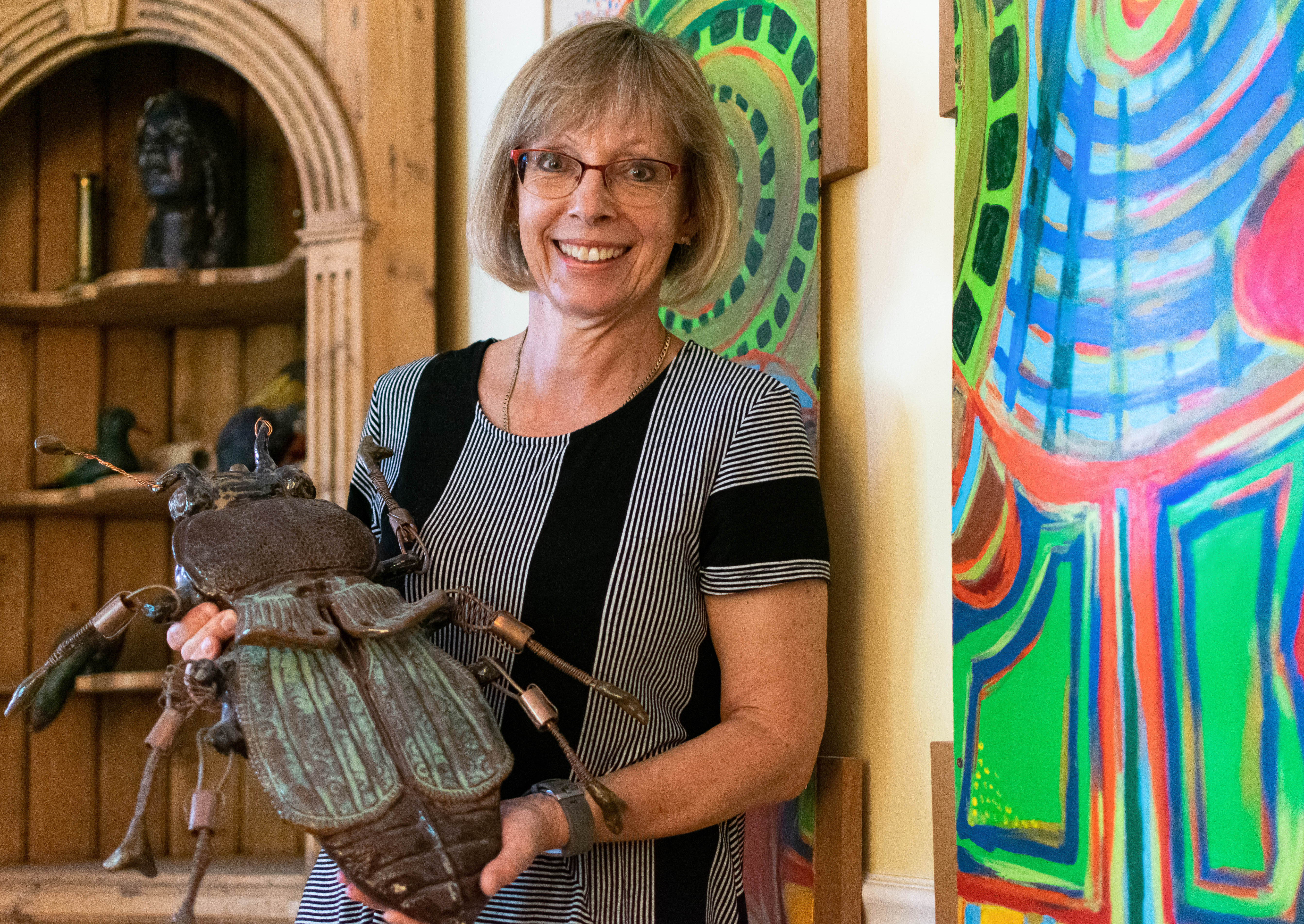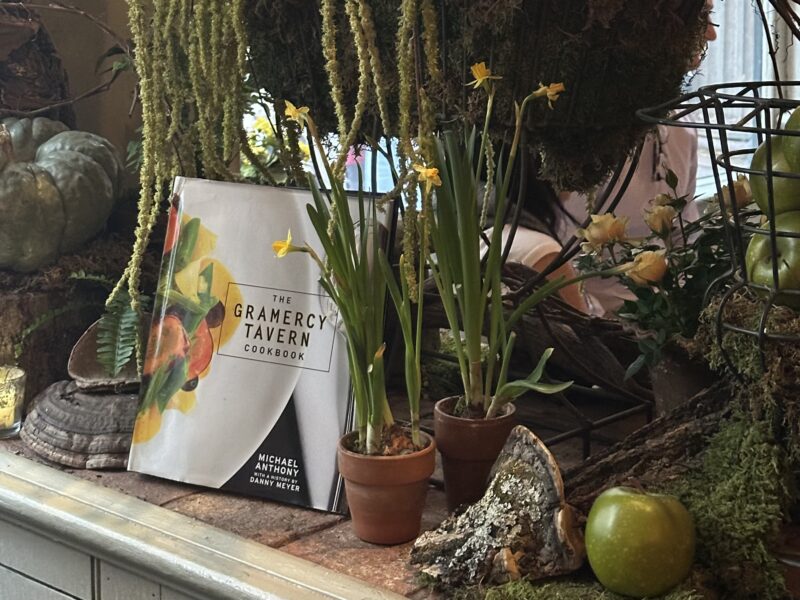
Jonah Hinebaugh | The Crow’s Nest
By Jonah Hinebaugh
For the first time, artists living in the Old Southeast opened their doors to show off their home-based studios and artwork on Oct. 19.
The self-guided tour brought visitors into the homes of 13 residents in the Old Southeast Artist Enclave.
The event was organized in part by Esther Aall, who helped revitalize the dormant enclave, which hasn’t held any significant events since receiving the designation five years ago.
Aall, a sculptor, moved to Old Southeast from Switzerland in 2016 and, by chance, learned about the neighborhood’s designation.
“I should probably check [the enclave] out and see what has been done or what I can do,” Aall recalled saying. “So I started to talk to people in the neighborhood and I said, ‘I would love to bring this alive.’”
The Old Southeast is a neighborhood of homes just south of USF St. Petersburg between Fourth Street S and Tampa Bay. It includes a variety of house styles that range from cheap cottages to houses costing more than $600,000.
According to the city of St. Petersburg’s municipal code, artist enclaves, or Artist Enclave Overlay Districts, “encourage a mix of small-scale, home business uses oriented toward or supporting the visual, performing and cultural arts, while maintaining the residential character of the underlying residential neighborhood.”
The city’s code also says that these enclaves are normally established within “single-family residential neighborhoods where artists may live, create work and market their art.”
To become an artist enclave, at least two-thirds of residents in the proposed district must give their approval.
Old Southeast is one of only two enclaves in the city. The other is the Historic Kenwood neighborhood.

Jonah Hinebaugh | The Crow’s Nest
The enclave has existed since 2014, thanks to Scott Durfee – an artist who uses recycled material to make jewelry, dresses and sculptures – and his former partner, George Medeiros. Durfee and Medeiros moved from Philadelphia to Old Southeast in 2003 and got involved with the neighborhood association.
“We fell in love with the charming community,” Durfee said in an email. “Back then [Old Southeast] was a not-so-great neighborhood, which had many stigmas about its location in south St. Pete, and we won’t talk about the negative color divide of our city’s history.
“Remember, we relocated here from [Philadelphia]… the city of brotherly love.”
According to Durfee, in early 2010 there was a push for an artist initiative in the city that led to “Spathose” – their home-based studio – to be officially recognized as one.
Durfee worked closely with members from the Historic Kenwood Artist Enclave when he established it in Old Southeast.
“This proposal was going to help all artists in St. Petersburg by bringing more attention to the already ever-growing artist movement,” Durfee said.
After Durfee and Medeiros halted their partnership, the enclave remained inactive until Aall took over as the unofficial coordinator.
“I had visited Historic Kenwood, and I knew what they were doing,” Aall said. “I thought, OK, we could do that, too. I actually started to recruit people and started to bring them over to do meetings here. I got people who are interested in the artist enclave and let them know that we are planning to start making these events happen.”
In June, Aall and others held a contest to pick a logo for the enclave. A month later, after the logo was chosen, a silent auction of the different logo submissions was held to raise funds for the self-guided tour.
Organizing the tour, Aall said, was tricky. Some skeptical residents supported the initial petition but feared it would get “too big, too soon” and fizzle out once again; others outright opposed the enclave.
Despite those protests, Aall said, people who continued to show up for meetings began to feel ownership over the enclave and invested more time in it.
Aall said she isn’t worried about the momentum of the enclave this time around.
“I think something like an artist’s enclave in a neighborhood takes time,” she said. “I’m thinking back to Historic Kenwood because I think at the beginning they had a hard time bringing it up to speed, and now they have been around five years.”
What seems most important to her is showcasing the talent of all artists spanning the city’s five arts districts, museums, enclaves and outsiders.
“I think there’s space for everyone,” she said. “If they bring people from the outside in, it gives exposure to what lies beyond us.
“Creativity goes beyond borders, so there’s no border for only St. Petersburg. I think we should be open to everything.”



